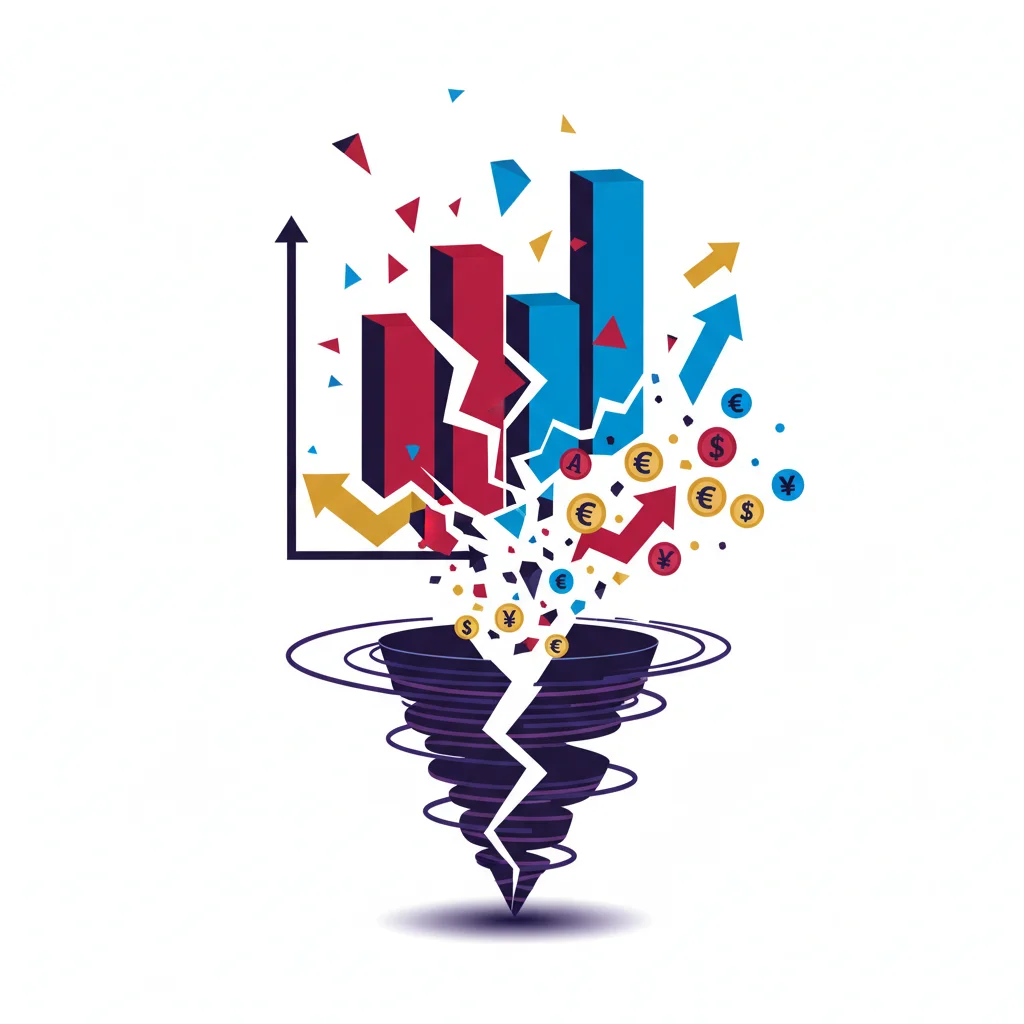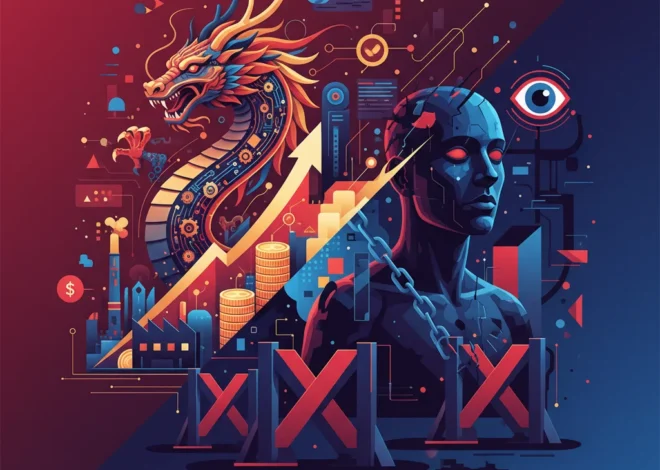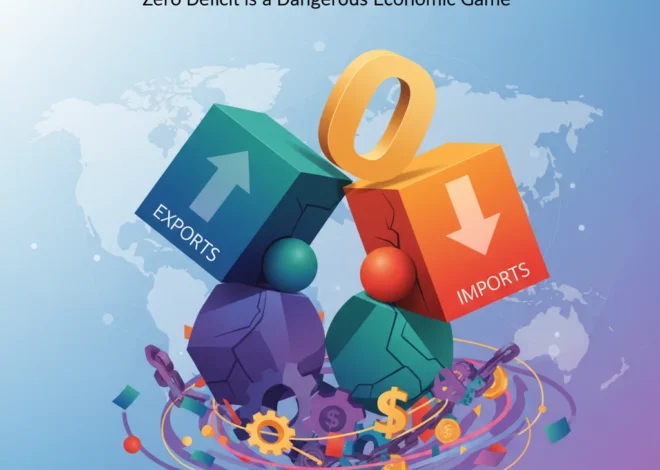
Political Cracks, Economic Quakes: Why Infighting on the Far-Right Matters to Your Portfolio
The Unseen Risk: When Political Fissures Become Market Fault Lines
In the world of finance and investing, analysts are trained to watch economic indicators, corporate earnings, and central bank statements with hawk-like intensity. Yet, one of the most potent, and often underestimated, sources of market volatility stems not from balance sheets, but from the ballot box and the political theater that surrounds it. A recent discussion on the Financial Times’ “Behind the Money” podcast, featuring insights from Edward Luce, Joe Miller, and Claire Jones, peeled back the curtain on a significant development: the emergence of deep fractures within the “Make America Great Again” (MAGA) movement. While this may seem like a niche political story, its implications for the U.S. economy, the stock market, and global financial stability are profound.
For business leaders, finance professionals, and investors, ignoring these political undercurrents is no longer an option. The ideological battles waged within a major political bloc can signal future shifts in everything from trade and tax policy to banking regulation and technological innovation. Understanding these dynamics is crucial for navigating an increasingly complex economic landscape where political risk is a tangible asset class. This analysis will delve into the economic consequences of this political fracturing, exploring why what happens in a far-right interview can send ripples through the entire financial system.
From Monolith to Mosaic: Deconstructing the Political Division
At its core, the issue highlighted in the FT discussion is the splintering of a once-cohesive political force. What was often perceived as a monolithic movement is revealing itself to be a collection of competing ideologies, personalities, and, most importantly, economic philosophies. The central conflict appears to stem from a debate over the movement’s future direction, particularly regarding its engagement with more extreme elements. According to the analysis, this isn’t just a minor disagreement; it’s a “fundamental schism” (source) that pits traditional conservatives against a more radical, nationalist wing.
This internal power struggle creates a fog of uncertainty. Will the movement’s economic platform double down on protectionist trade policies, or will it pivot towards a more libertarian, deregulatory stance? Will its approach to fiscal policy be one of populist spending or hawkish deficit reduction? The lack of a clear answer to these questions is precisely what should concern anyone involved in finance and economics. Markets thrive on predictability; political infighting is its antithesis. This unpredictability can directly impact everything from corporate investment decisions to the long-term stability of the U.S. dollar as the world’s reserve currency. Geopolitics & Portfolios: Analyzing Trump's Hungary Sanctions Exemption and its Market Impact
Mapping the Economic Ideologies in Conflict
To better understand the potential economic outcomes, it’s helpful to visualize the competing philosophies at play. The table below outlines the potential policy differences between the main factions, illustrating the starkly different economic futures they envision.
| Economic Policy Area | Populist-Nationalist Faction | Traditional Conservative / Pro-Business Faction |
|---|---|---|
| Trade & Tariffs | Aggressive use of tariffs, bilateral deals, focus on domestic manufacturing (“America First”). | More cautious on tariffs, potential for multilateral agreements, focus on corporate competitiveness. |
| Fiscal Policy | Open to increased spending on populist programs; less concerned with the national debt. | Prioritizes tax cuts, deregulation, and fiscal restraint to control the national debt. |
| Banking & Finance Regulation | Skeptical of large financial institutions; may support unconventional policies or challenge Fed independence. | Favors broad deregulation of the banking sector to spur lending and economic growth. |
| Financial Technology (Fintech) | Views on fintech and blockchain are undefined, potentially hostile if seen as a threat to national control. | Likely to support fintech innovation as a driver of competition and efficiency in the financial sector. |
The Ripple Effect: How Political Fractures Impact the Broader Economy
The consequences of this internal strife extend far beyond the Beltway. For the financial world, the primary impact is a dramatic increase in policy uncertainty, a factor that can paralyze economic activity and spook the stock market. When businesses cannot reliably predict future tax rates, trade rules, or regulatory environments, they postpone major investments and hiring plans. This hesitation can slow down the entire economy, creating a self-fulfilling prophecy of stagnation driven by political instability.
Furthermore, this infighting has significant implications for U.S. fiscal credibility. The ability of Congress to pass budgets, raise the debt ceiling, and respond to economic crises relies on a degree of party cohesion. As one analyst noted, internal party fractures were a key reason the U.S. credit rating was downgraded in the past (source). Renewed and intensified infighting raises the specter of government shutdowns and, more perilously, a potential debt default. Even the remote possibility of such an event can send shockwaves through global markets, increasing borrowing costs for the government, corporations, and consumers alike.
This climate of uncertainty could also have an unexpected effect on emerging sectors like fintech and blockchain. On one hand, a deregulatory push from one faction could create a boom for financial technology innovation. On the other, a nationalist turn could lead to crackdowns on decentralized currencies and technologies seen as undermining sovereign control. This dichotomy forces investors in the space to not only bet on the technology but also on the outcome of a complex political power struggle. Solving the Financial Puzzle: A Strategic Guide to Today's Complex Economy
Navigating the New Political Risk Landscape
For investors and business leaders, the key is to move beyond traditional economic analysis and incorporate sophisticated political risk assessment into their strategies. This means actively monitoring the ideological shifts within political movements, not just the headline polls. It requires understanding the key players and the economic philosophies they champion.
Here are some actionable strategies for this new environment:
- Scenario Planning: Develop business and investment strategies that are resilient under multiple political-economic scenarios. Instead of a single forecast, model outcomes based on the ascendancy of different political factions.
- Sector-Specific Analysis: Recognize that political shifts will not impact all sectors equally. Industries heavily reliant on international trade, such as manufacturing and agriculture, are highly exposed. Conversely, sectors like domestic infrastructure could benefit from certain populist policies. The banking and fintech sectors will need to watch regulatory signals closely.
- Hedging Strategies: Consider financial instruments and asset allocation strategies that can hedge against heightened volatility and political risk. This could include diversifying assets geographically or investing in asset classes that are less correlated with the political cycle.
- Focus on Fundamentals: In times of uncertainty, the value of strong corporate fundamentals—healthy balance sheets, consistent cash flow, and durable competitive advantages—becomes even more pronounced. Companies that can weather political storms are premium assets.
Ultimately, the fracturing of the MAGA movement is a microcosm of a broader trend in Western democracies: the breakdown of traditional political coalitions and the rise of unpredictable, personality-driven politics. The era when economics could be neatly separated from politics is over. Pfizer's Billion Gambit: Winning the War for Metsera and the Future of Weight Loss
Conclusion: The Price of Political Instability
The discussions on the FT podcast serve as a critical reminder that the plumbing of our political system is directly connected to the pipelines of our economy. The ideological cracks forming within the American far-right are not merely a political curiosity; they are a leading indicator of potential economic turbulence. From the stock market to the banking sector, from international trade to the future of financial technology, the shockwaves from this political earthquake will be widely felt.
For those of us in the world of finance, investing, and business, the message is clear: we must broaden our analytical toolkit. We must become as adept at reading the political tea leaves as we are at reading earnings reports. The stability and prosperity of the global economy may very well depend on it.


